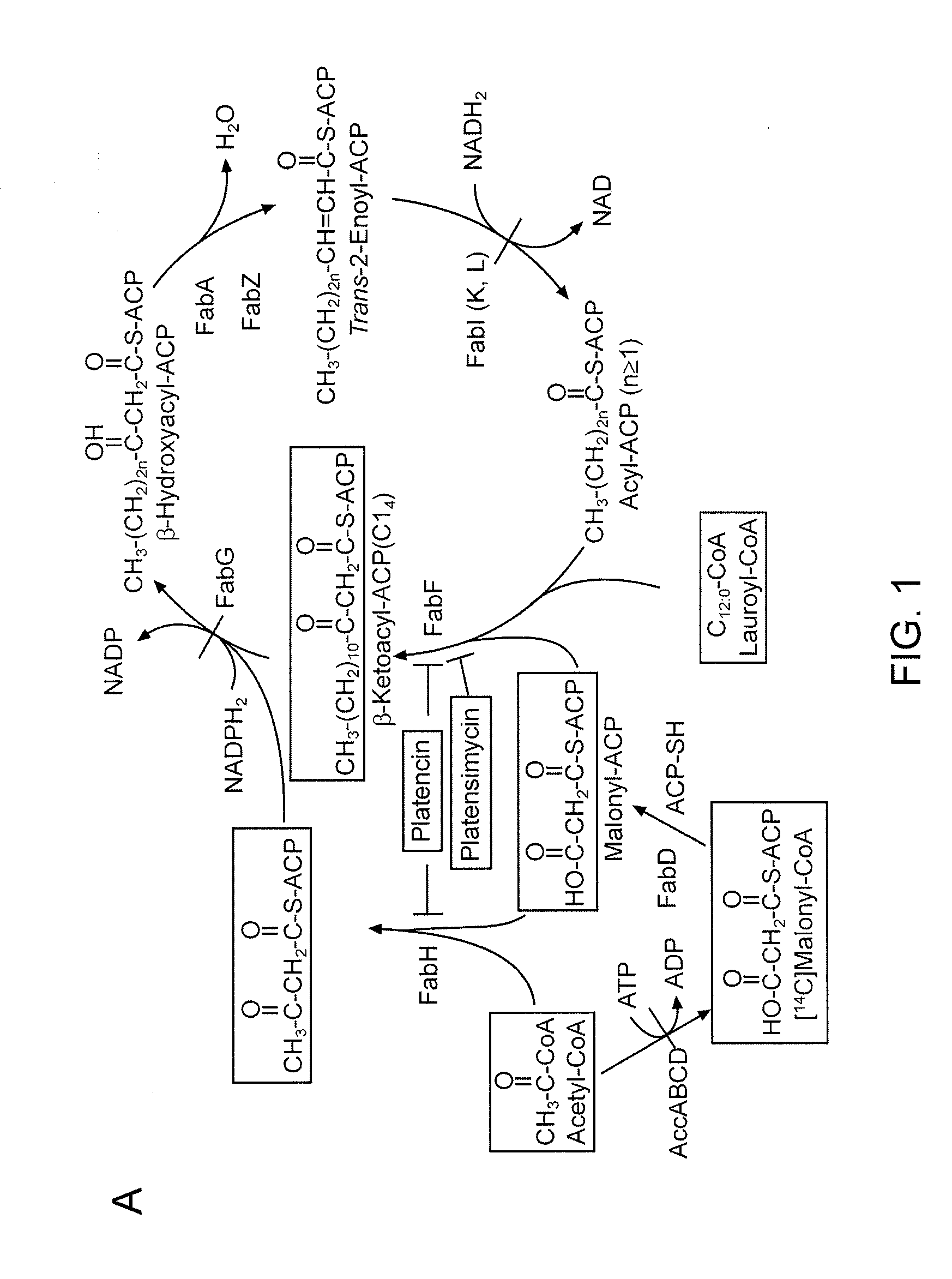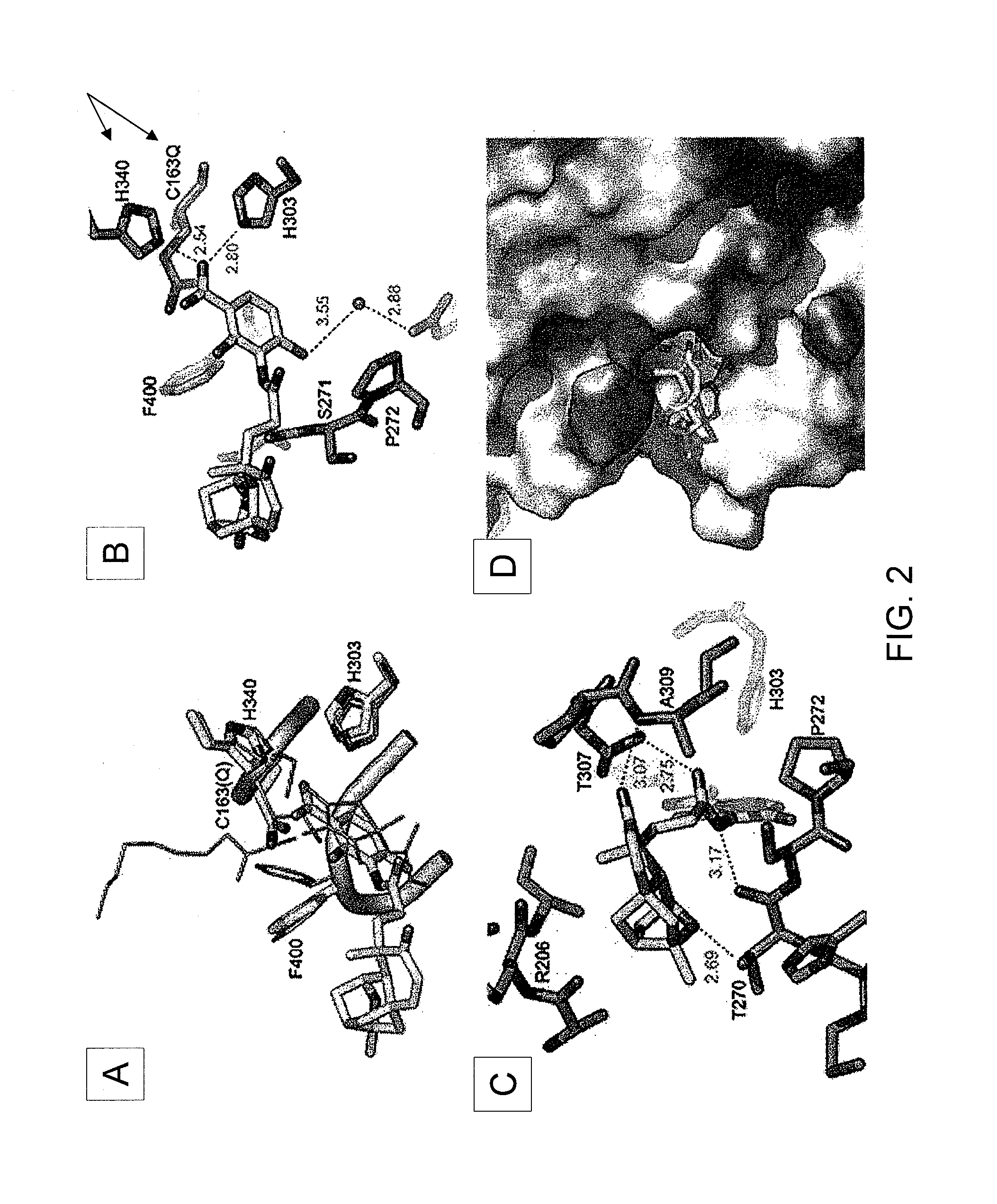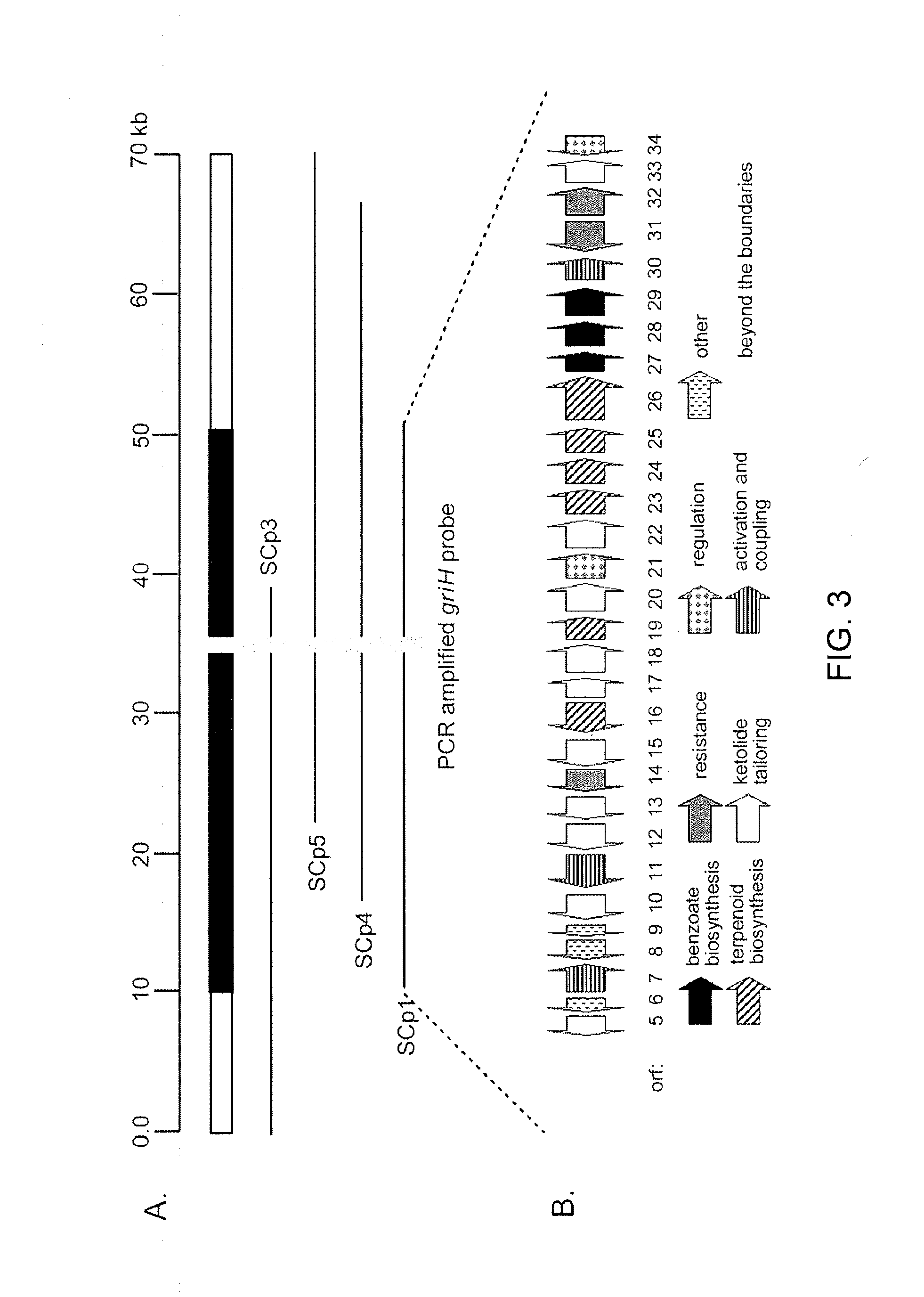Platensimycin biosynthetic gene cluster of streptomyces platensis
a technology of streptomyces platensis and platensimycin, which is applied in the field of microbiology and bacterial genetics, can solve the problems of no clinically useful antibiotics, neither thiolactomycin or cerulenin display sufficient clinical activity,
- Summary
- Abstract
- Description
- Claims
- Application Information
AI Technical Summary
Problems solved by technology
Method used
Image
Examples
example 1
[0151]Production of platensimycin and platencin by S. platensis MA7327 and MA7339. Two S. platensis strains—MA7327 the original PTM producer (Wang et al., 2006; Singh et al., 2006) and MA7339 the original PTN producer (Wang et al., 2007; Jayasuriya et al., 2007)—were provided by Merck. PTM and PTN productions from these strains under the reported conditions have been re-established in the inventors' lab with comparable yields (i.e., ˜1-4 mg / L for PTM and ˜1 mg / L for PTN) (Wang et al., 2006; Singh et al., 2006; Wang et al., 2007; Jayasuriya et al., 2007). An HPLC method for PTM and PTN analysis has also been developed. Recognizing the biosynthetic parallel between PTM and PTN (see FIGS. 5A-D), the inventors were interested in examining if the PTM producer could produce PTN or vice versa by varying the fermentation conditions. Remarkably, while the MA7339 strain produces PTN exclusively under all conditions tested, the MA7327 strain produces PTM exclusively in the PTM medium as report...
example 2
[0176]Materials and Methods. Antibiotic production conditions. 500 μl of dense cultures grown in R2YE (sucrose 103 g / L, K2SO4 0.25 g / L, MgCl2.6H2O 10.12 g / L, dextrose 10 g / L, Difco Casaminoacids 0.1 g / L, Difco yeast extract 5 g / L, TES 5.73 g / L, adjust to pH7.0, autoclave, then add 6 ml of 1 M NaOH, 10 ml of 0.5% KH2PO4, 20 ml of 1 M CaCl2, 15 ml of 20% proline, and 2 ml of trace elements per liter of medium) were used to inoculate 50 ml ISM-3 seed medium (Difco yeast extract 15 g / L, Difco malt extract 10 g / L, MgSO4 0.244 g / L, FeCl3.6H2O 0.3 g / L, dextrose 20 g / L, pH 7.0) in 250 ml baffled flasks. Seed cultures were grown at 28° C., 250 rpm in incubated shakers for 48 hours. 500 μl seed culture was used to inoculate 50 ml production medium (SLY: Stadex 60K dextrin 40 g / L, lactose 40 g / L, Difco yeast extract 5 g / L, pH7.0; SLYM: SLY with MOPS sodium salt 20 g / L pH 7.3; PCNM: yeast extract 6 g / L, malt extract 15 g / l, dextrose 6 g / L, MOPS sodium salt 20 g / L, pH 7.4, autoclave then add 5 m...
PUM
| Property | Measurement | Unit |
|---|---|---|
| minimum inhibitory concentration | aaaaa | aaaaa |
| minimum inhibitory concentration | aaaaa | aaaaa |
| concentrations | aaaaa | aaaaa |
Abstract
Description
Claims
Application Information
 Login to View More
Login to View More - R&D
- Intellectual Property
- Life Sciences
- Materials
- Tech Scout
- Unparalleled Data Quality
- Higher Quality Content
- 60% Fewer Hallucinations
Browse by: Latest US Patents, China's latest patents, Technical Efficacy Thesaurus, Application Domain, Technology Topic, Popular Technical Reports.
© 2025 PatSnap. All rights reserved.Legal|Privacy policy|Modern Slavery Act Transparency Statement|Sitemap|About US| Contact US: help@patsnap.com



